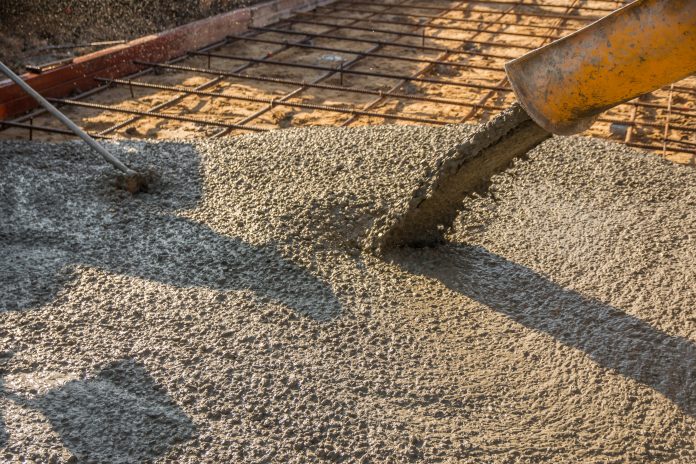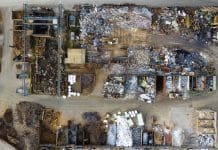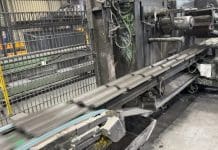Laing O’Rourke has announced it is switching to low-carbon concrete on all of its new UK projects to accelerate the company’s progress towards its net-zero targets
The switch to using low-carbon concrete, made on April 1, will lead to a significant reduction in Laing O’Rourke’s scope 3 carbon emissions.
The decision follows a long-term research programme partially funded by Laing O’Rourke and Innovate UK. The study was completed in collaboration with the University of Cambridge and Sheffield University’s Advanced Manufacturing Research Centre (AMRC).
Low-carbon concrete can lead to significant reductions in emissions
Laing O’Rourke has proven that low-carbon concrete options can successfully be deployed on projects in place of traditional concrete. The carbon reduction of itch will lead to an overall carbon reduction of 28% when compared to the company’s concrete usage in 2022. A 14.4 million kgCO2e will be saved across the company, which is the equivalent of planting 120,000 trees or 94 hectares of forest.
“We’ve committed to being a net zero company before 2050, and we are looking at every possible measure to accelerate our progress. In construction, the greatest challenge is reducing scope 3 emissions – the embodied carbon in purchased materials,” said Cathal O’Rourke, Laing O’Rourke’s newly appointed chief operating officer.
“Reducing all carbon emissions is a priority for our business. The built environment contributes significantly to global warming, and constructors must work with clients and design partners to deploy new technologies and innovations that make modern methods the norm and enable us to build in less carbon-intensive ways,” continued O’Rourke.
The low-carbon concrete uses lower-carbon alternatives to Portland cement
Laing O’Rourke is a founding member of Concrete Zero in 2022 and has already decarbonised beyond the programme’s short-term objectives. The company’s low-carbon concrete uses lower-carbon alternatives to Portland cement. These alternatives include GGBS (Ground Granulated Blast-furnace Slag) and PFA (Pulverised Fly Ash), which are both industrial by-products with a low carbon footprint.
Laing O’Rourke understands that they still have a long way to go to achieve their decarbonisation goals. The company’s ongoing research programme is focused on the wider-scale deployment of ultra-low carbon cement-free options. They are confident of producing these materials in the future.
“Reducing carbon emissions from concrete is essential to achieving net zero carbon by 2050. I’m pleased to see the leadership Laing O’Rourke is showing through innovating and adopting the use of low-carbon concrete on all the construction projects it delivers,” said construction minister Nusrat Ghani.
“The expertise of our in-house concrete technologists, the experts who operate our advanced manufacturing facility in Nottinghamshire (the Laing O’Rourke Centre of Excellence for Modern Construction, CEMC), and our supply chain partners, have all contributed to this significant step forward,” concluded Rossella Nicolin, head of sustainability for Europe.
The concrete and cement industry in the UK has reduced the embodied carbon of concrete, per tonne, by 30% since 1990. The total reduction in carbon emissions in the UK cement and concrete industry is 53% compared to 1990.
In 2020, the UK concrete and cement industry published the Roadmap to Beyond Net Zero by 2050; The roadmap provides a realistic route based on seven key decarbonisation technology levers to go beyond net zero.
















Where are you going to get the fly ash from after they have shut down all the coal fired power stations. The same with blast furnaces slag when they are slowly being shut down. Wouldn’t say that there is a reduction in carbon emissions as you still need coal to produce both products.